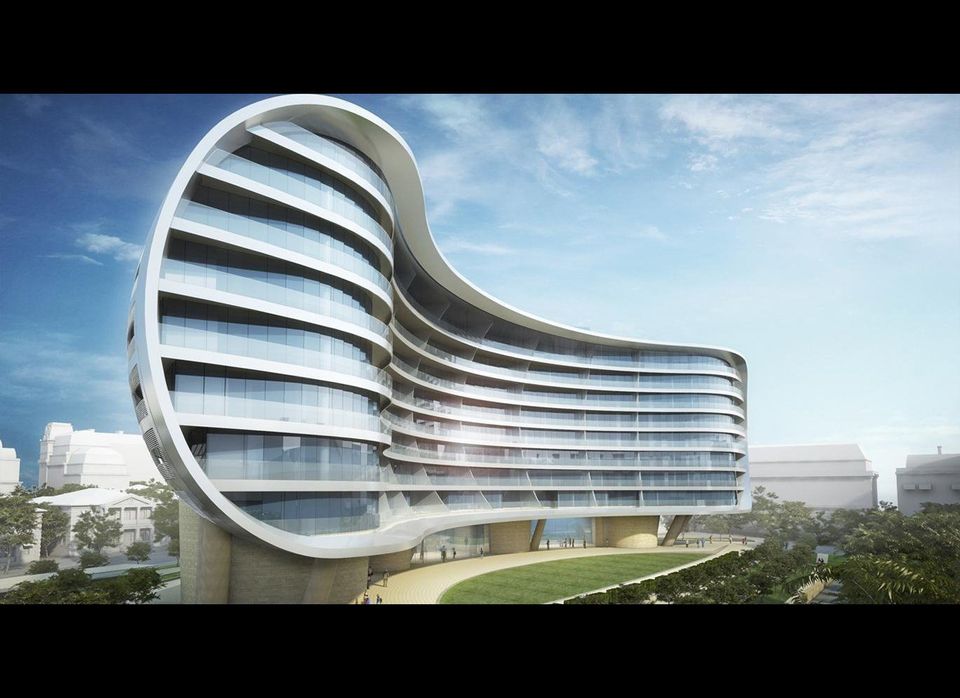Baku, the capital of Azerbaijan, a city poised on the Caspian Sea between Russia and Iran, has ranked atop Forbes' list of the 25 most polluted cities -- largely due to its oil and gas industries and almost uncontrolled auto emissions -- since 2008. But this small, cash-rich nation of 8.3 million people (more than 90 percent ethnic Turkic, and secular Muslim) is desperate to transform their metropolis into a center for leisure, business travel, and high-end urban living.
In 2006, President Ilham Aliyev signed a decree to clean up his country's ecological problems. That same year, Azerbaijan started using the 1,100-mile Baku-Tbilisi-Ceyhan pipeline to flow its oil to Western Europe. Aliyev's top priority was to dig out and transform Baku's century-old polluted oil industrial area dubbed "Black City" into a pristine, likely multibillion-dollar, mixed-use expanse renamed "White City."
Part of Azerbaijan's sales pitch is offering government financial incentives to attract commercial financiers to take the risk of developing and making money on sections of White City. With government and private funds, the nation is intent on covering the 545-acre zone with 10 development districts, 11 high rises, a spiraling, 360-room, 5-star "Iconic" hotel perched on the Caspian waterfront, a 40-acre indoor mall, a modern art pavilion, concert hall, 215-foot Ferris wheel, space for 50,000 residents, and to create 48,000 jobs. The development would cover about 15 million square feet.
Aliyev and the ruling elites and oligarchs who run Azerbaijan have enlisted a Who's Who of designers of fashionable, ultra-modern skyscrapers -- made famous in extravagant architectural showcases like Dubai, Bahrain and Abu Dhabi - to do what they did there for Baku.
Brand-name British and American building designers have signed on as partners in White City. London-based Atkins (designer of the WTC Bahrain, with its built-in wind turbines, and Burj Al Arab in Dubai) serves as the main consultant and planner. Another British firm, Foster & Partners (designer of the New York Public Library, Beijing International Airport, London City Hall, and the cylindrical Swiss Re high rise in London) is behind the concepts for the White City waterfront's five high rises, Ferris wheel and Iconic hotel. An American firm, F+A Architects (Ski Dubai, the Mall of Emirates), of New York, is doing the Baku City Mall and Fountain Square sector. Providing construction management and tech support is the Fortune 500 firm, AECOM, of Los Angeles.
Just over a century ago, Baku was the world's petroleum capital, home to 50 percent of the global oil supply. After less than a year of democracy in 1919, Azerbaijan was acquired by the Soviet Union. The city's oil was Hitler's objective in his losing battle with the Russians, who controlled Azerbaijan, at Stalingrad in 1943. On Stalin's orders, one of the world's first offshore drilling platforms was constructed on the Caspian overlooking Baku in the late 1940s. After Azerbaijan gained its independence from the former Soviet Union in 1991, it inherited the Soviet legacy of environmental carelessness.
Based on an online message by Azerbaijan state TV this month, the Azeri government apparently still blames the former USSR for the nation's harmed environment. "The ecological problems then were out of focus of attention. Even in the best days of the Soviet times ecological issues were not given much attention as they did in the West."
